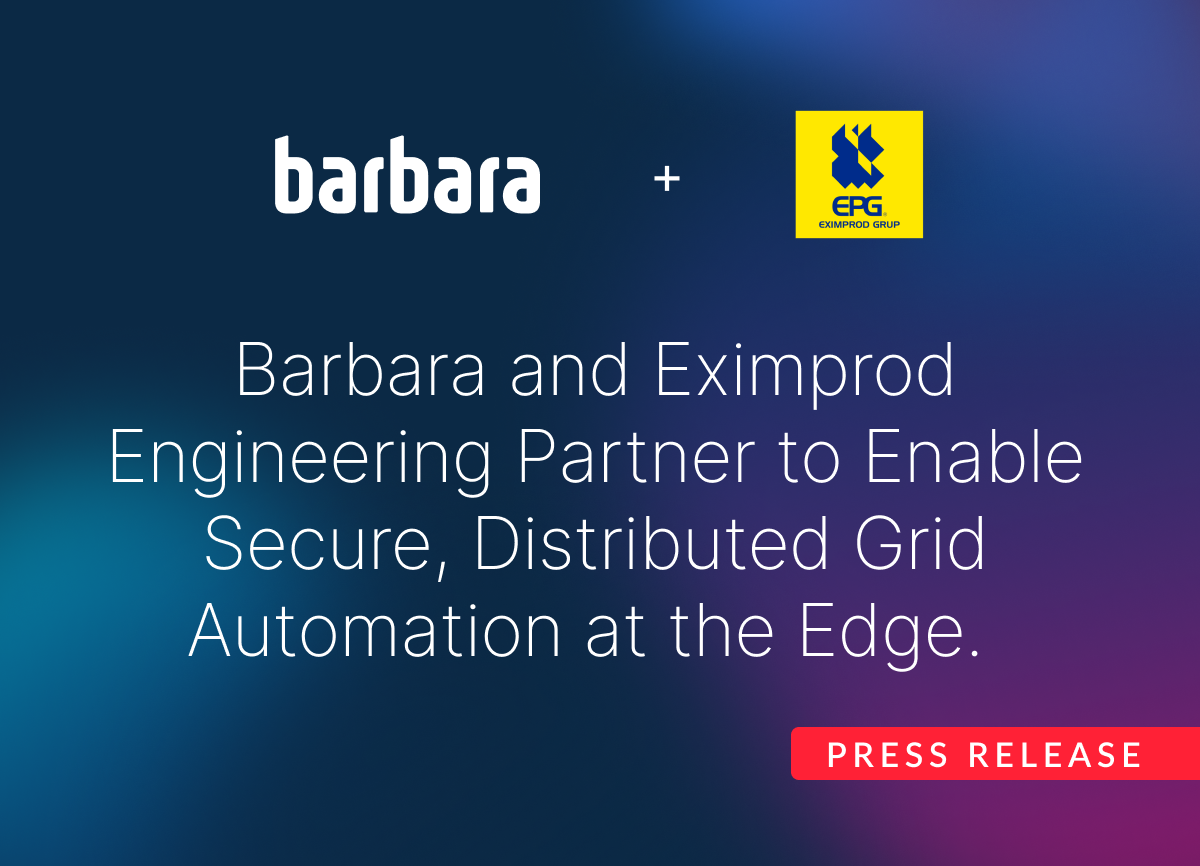Advantages of Edge Computing in Industrial environments
Because of the advantages it offers, Edge Computing is receiving great interest from the most advanced industrial sector. The reality is that Edge Intelligence together with IoT is being implemented by the most innovative companies.
If in 2019 Grand View Research estimated the value of the Edge Computing market at $3.5 billion, the same firm claims today that this figure will rise to $43.4 billion by 2027, following an annual growth rate of 37.4% .
The reason for this growth is the potential of advanced intelligence at the edge to optimise, accelerate and streamline processes, providing a competitive advantage to those who get a head start in its implementation.
Therefore, we analyse what Edge Computing is and the advantages it offers to the Industrial sector.
What is Edge Computing?
Edge computing is a distributed model of computing systems that brings data storage and processing closer to the place or location where the data is obtained. It enables the analysis of large volumes of distributed data, in real time, in a cybersecure, scalable way and allows the integration of field equipment from a multitude of suppliers, technology and protocols.
You may be interested in:
Four Edge Computing Applications in industrial environments
Advantages of Edge Computing
1. Boosting cybersecurity
As more devices are connected to IoT networks and access more information, taking care of security in Industrial IoT becomes vital to protect critical data and processes in any enterprise.
Edge computing technology allows, since the cloud environment is usually centralized (which increases the risk of attacks), to reduce the chances of finding vulnerabilities. If we work with large amounts of data, it is extremely important to take care of this factor, especially if we take into account that nowadays information is as valuable as the final service or product.
2. Higher speed
Edge computing allows companies to process and analyse large amounts of data from their own devices, shortening the time it takes for information to travel to the server in other paradigms, edge networking reduces load times to milliseconds.
Eliminating latency, in turn, means that users have access to real-time information and can make automated decisions more quickly.
In other words, the edge computing technology associated with Industry 4.0 makes it possible to virtually eliminate the latency barrier. Thus, if an IoT device detects a failure of any kind related to, for example, the production line, we can act immediately. Otherwise, taking action would take more time, which would most likely result in losses.
3. Enables scalability
Companies can combine the use of local and remote networks in a flexible way, generating a scalable system according to their needs.
This is where one of the biggest advantages of edge computing in Industry 4.0 comes into play, and that is that it enables the IoT network (IIoT in this case) to translate protocols, which in turn expands the variety of systems that can be worked with simultaneously.
4. Stimulus to efficiency
The concept of efficiency could be defined as the ability to achieve results using the least amount of resources possible. IoT edge environments are highly efficient because, by leveraging the use of the local network, they minimize the use of resources such as bandwidth.
Edge computing offers a middle ground between on-premises and cloud, as it can analyze the data we store locally and select the most relevant information, such as results of process analysis or machine status, to send it to the cloud system. This decongests the cloud and reduces the overall costs associated with information storage.
Advantages of edge computing for the industrial sector
Across all sectors, industrial companies are undergoing digital transformation processes. Being able to connect devices, as well as collect and exploit this data, is becoming crucial to driving their businesses forward.

Utilities where business continuity is key for the critical services sector such as electricity, gas or water. Monitoring their assets to detect failures, or even prevent them, is a basic functionality. However, their assets are often located in remote locations. Edge computing in this case enables real-time analysis, with processing much closer to the asset, which means much less reliance on connectivity and better response times.
Renewable energy. Edge computing can have a high impact on the sustainable management of limited renewable energy resources, such as solar and wind energy. Edge computing algorithms can assess in real time, and even predict, the supply and demand of energy resources, leading to substantial improvements in the energy balance. Companies seeking to reduce carbon emissions are increasingly looking positively at the use of Edge Computing combined with the Cloud in this regard.
Intelligent Electricity Grids - Smart Grids. With the emergence of distributed energy resources, such as electric cars, chargers, batteries, self-consumption solar panels, and other elements, local decision making can lead to very high energy efficiency improvements for companies or large communities.
At Barbara IoT we enable Artificial Intelligence in the cloud and at the Edge. If you are interested in this article, request a custom demo to find out how IoT can help you advance your digitisation process



.png)





